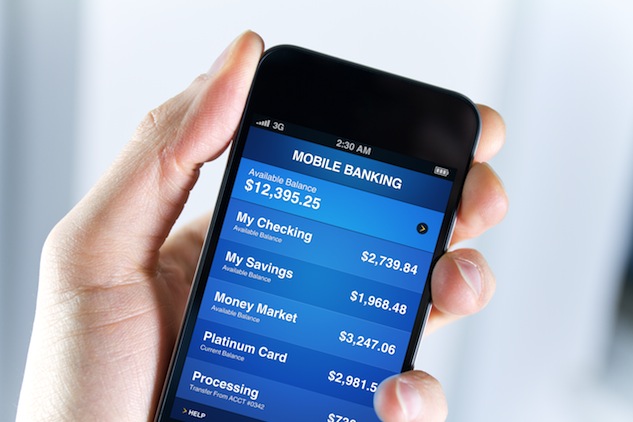
Banks and financial institutions were early adopters of mobile because it was a service people expected. It’s convenient.
Citi, for example, got into mobile banking in 2006, with text message banking services. In 2007, the company rolled out the first version of its mobile website and an app for the iPhone. The company later released its iPad app and apps for Android devices. It was also one of the earliest advertisers with Apple’s iAd network.
A study by Compete found that 57 percent of U.S. smartphone users rely on mobile banking. And a recent Juniper Research report predicts that there will be 1 billion mobile banking users by 2017, which is equivalent to more than 15 percent of global mobile subscribers.
Tracey Weber, head of Internet and mobile at Citi, says that mobile is a must have, but it does present its own set of unique challenges. For one, not all consumers are comfortable having their financial information on their mobile phone. Also, for those who are tech-savvy and willing to use mobile banking, it’s a challenge to compete with the user experiences of more advanced apps like Facebook.
Why is mobile so important to Citi?
Customers are using mobile devices and have them all the time. When managing your financial life, having mobile as an option to do that is hugely empowering and just really convenient. It makes our customers satisfied customers. Take something like mobile check deposit. In the past, you’d have to stand in line, deal with a teller and all that. Now you could do it from anywhere. Convenience is the key to our mobile strategy.
What’s the biggest challenge?
Consumer expectations. People are using retail apps and social networking apps that have a superb user experience, and that puts pressure on us. It sets a high bar in terms of the experience we have to provide. We spend a lot of time on that. And expectations are constantly changing and evolving. Capabilities are important as well, for customer-retention purposes. But most of all, customers want the mobile experience to be clear, fast and easy, and that’s a challenge.
Are people are ready to trust mobile with their financial information?
They are. We certainly saw with the Internet that it takes time for some people to get started with digital forms of banking. But because of the Internet, people aren’t as uneasy about mobile as we saw with the Internet. Yes, security is still a concern for some people. And it’s not just about the application or site being hacked. It’s the fact that you’re in public doing stuff, liking standing in line, and you don’t want people seeing you’re financial information. The key is providing capabilities that are really convenient. That usually gets people over the security hurdle.
When mobile first became big, banks were all over SMS. They’re not so obsessed with SMS anymore, though. Is SMS dead?
There are two aspects to SMS. In the U.S. market, you’re absolutely right. Enough people have smartphones and are using the mobile Web and apps. But we do still have some customers that are using text-banking. Believe it or not, it’s the fastest way to get information like your balance. But it isn’t growing like mobile apps or browser access. There’s a lot of potential for alerts with SMS, and we do that with important messages, like when someone is getting close to an overdraft. In other countries, there are different profiles of people. They are more reliant on SMS, and it has to do with the types of mobile devices they are using.
How do you think about mobile relative to other digital channels?
We have been really thoughtful about evolving how people use different digital devices. Mobile is very on the go, and so we have quick access to tools that a person on the go would need. Tablets, on the other hand, are very lean back, so we provide more capabilities in our tablet apps. On the Web, we provide all of the capabilities. It’s important to keep in mind the different mindsets of consumers based on the device they are using. We are not trying to give mobile users every single capability.
More in Marketing

Pitch deck: How Amazon is recasting Twitch as a core part of its CTV pitch
Amazon is positioning Twitch as a defining asset in its CTV ambitions.

Netflix transforms former mall department stores into experiential venues
The location in Dallas opens this week, and one at the King of Prussia mall near Philadelphia opened last month.

Future of Marketing Briefing: AI has created a new talent paradox in programmatic agencies
The job isn’t execution anymore. AI handles that. The job is judgement.





